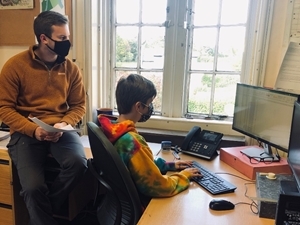 This year the Biometrics team has three students who are on placement here at the GWCT. Rachel Cook and George Scarisbrick from Bangor University will be working with the GIS team and moving to Wetlands during the fieldwork season in April; Ellie Raynor (from Manchester Metropolitan University) will be assisting with the EU-Interreg PARTRIDGE project for the entire year.
This year the Biometrics team has three students who are on placement here at the GWCT. Rachel Cook and George Scarisbrick from Bangor University will be working with the GIS team and moving to Wetlands during the fieldwork season in April; Ellie Raynor (from Manchester Metropolitan University) will be assisting with the EU-Interreg PARTRIDGE project for the entire year.
Students start their placement with the GWCT between August and November each year. Most years we have between 12 and 14 placement students in various projects across the organisation. These placements are highly sought after, as they provide experience in practical conservation in a research setting – so are useful both for those planning careers in front-line conservation and those interested in a more research-oriented career.
GWCT student placements are advertised in latter part of the year – usually November/December, with interviews in January and appointments in February. This year’s advertisements will go out in November 2020, with the interviews in January 2021 for placements to begin in late summer/autumn 2021. Placements are designed to take in students studying for a relevant bachelor’s level degree, between the second and the third year of their course. Students who want to be offered one of these placements in the future should take care to ensure that their first-year results reflect their interest in a career in conservation research.
Here the Biometrics team’s students introduce themselves and report on what they have been doing over the first few weeks of their placement, including 4x4 training that is essential for them to be able to safely undertake fieldwork over the year they are with us and in their future careers.
Ellie Raynor, PARTRIDGE Project placement student
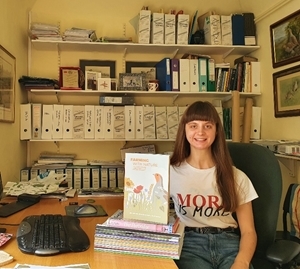 I have taken a year out of studying for my BSc in Wildlife Biology at Manchester Metropolitan University to undertake a placement year at the GWCT. The purpose of the placement is to gain practical experience and knowledge within the conservation sector in addition to providing me with ideas on future career choices.
I have taken a year out of studying for my BSc in Wildlife Biology at Manchester Metropolitan University to undertake a placement year at the GWCT. The purpose of the placement is to gain practical experience and knowledge within the conservation sector in addition to providing me with ideas on future career choices.
The first few weeks of my placement have been exciting, mainly by having the opportunity to work on the Interreg NSR PARTRIDGE project. The project aims to increase biodiversity and ecosystem services by 30% on ten 500-hectare demonstration sites spread across Belgium, England, Germany, the Netherlands and Scotland by 2023. In addition, 7% or more of each demo site is to be used for implementing new management solutions to create high quality habitat tailored towards the grey partridge, whilst also benefitting other farmland wildlife.
The workload and complexity of the project became clear from the get-go with the reading of press releases, blogs, reports, annual GWCT reviews, books and policies – the list goes on! But this has really helped as it has provided me with a thorough understanding of both the Trust and the PARTRIDGE project.
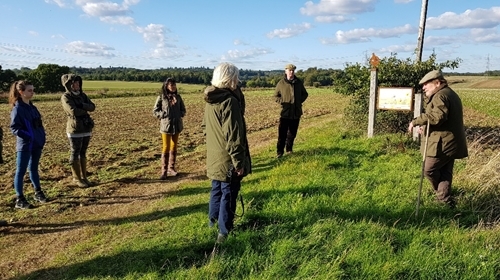
One of the key aspects of the placement is using ArcGIS Pro, an industry-leading GIS program, which will be a useful skill to have for a future career in conservation. I have also visited Rotherfield (one of the demo sites) for a farm walk and obtained my 4x4 training certificate.
The team at the GWCT are welcoming and are always on hand to answer any questions, no matter how small they may be!
Rachel Cook, GIS and Wetlands placement student
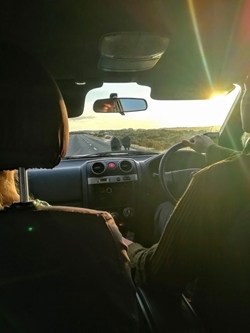 I study Environmental Conservation at Bangor University. I decided to do a placement year because, in the environmental sector, practical skills and experience are very highly valued, and a placement year is a great way to obtain these skills while still studying and getting support from both your employer and your university.
I study Environmental Conservation at Bangor University. I decided to do a placement year because, in the environmental sector, practical skills and experience are very highly valued, and a placement year is a great way to obtain these skills while still studying and getting support from both your employer and your university.
It is a few weeks into the placement, and I feel like I am settling in nicely. Obviously, it is a bit different from usual because of COVID-19, but everyone in the department is taking the necessary precautions and I feel safe when I come to work. There are always plenty of cleaning supplies provided for the office areas and vehicles. The site is great to live on, the grounds are beautiful, and the surrounding area is great for walks and cycle rides. And, of course, there is the river to swim in too. I am in the office most of the time at the moment, as there isn’t as much fieldwork in the winter, so I am learning a lot about the different software I’ll be using, which is useful. But I am looking forward to going out into the field too!
We recently went on a 4x4 training course, which was a fun and interesting experience. I learnt a lot and it will be very useful for field work in the future.
George Scarisbrick, GIS and Wetlands placement student
The 4x4 course was tougher than I had anticipated; having had plenty of experience driving on the road, I expected training to be a breeze – it wasn’t as if I would have to learn to drive again. However, this could not have been further from the truth.
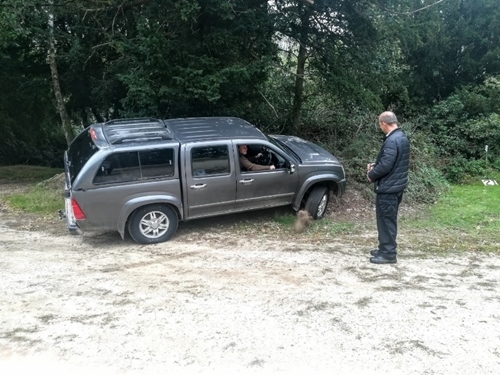
George demonstrating how to recover from a wheelspin while stuck on a bank.
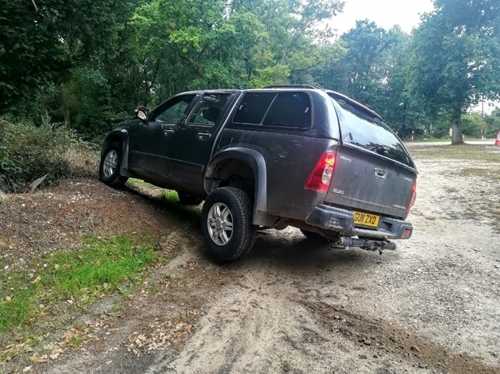
It felt uncomfortable to tip the car at such a steep angle with the wheels off
the ground, but it can tip over a lot more than this and still be stable!
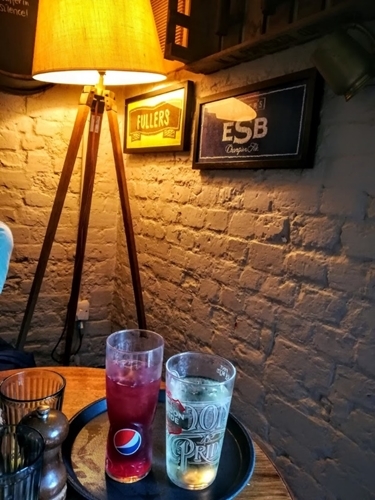 Stopping for drinks (non-alcoholic, of course!) at the pub
Stopping for drinks (non-alcoholic, of course!) at the pub
while waiting for the other students to complete their course.
I found myself grappling with a new approach to foot-pedal operation, rethinking the suitability of certain controls such as the handbrake, and tuning my mindset to a new range of risks. It took me out of my comfort zone but gave me invaluable knowledge for driving off-road in the future, an activity I will undoubtedly experience more of if I follow my ambitions.